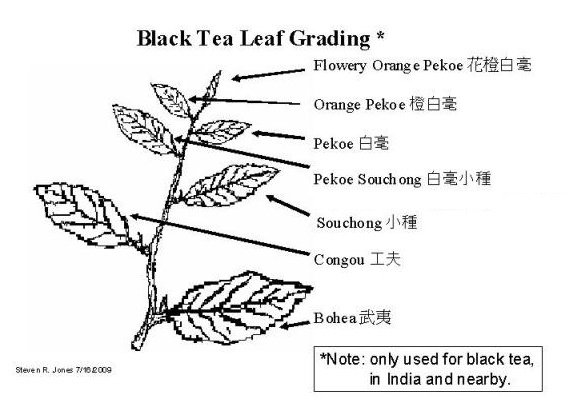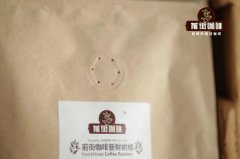Ceylon black tea the price of first-class tea in private tea gardens in Sri Lanka does Ceylon black tea taste good?
According to legend, tea originated in China 5000 years ago. In 2737 BC, the Chinese emperor Shennong declared that tea was good for health. In the 19th and 20th centuries, however, it was Ceylon (now Sri Lanka) that made tea famous.
Scotsman James Taylor planted the first tea garden in Sri Lanka. In 1867, Taylor planted 20 acres of tea at Loolecondera Manor (he was in charge of the estate). It was here that he perfected the technique of careful picking-"two leaves and a bud", that is, two leaves in one core.
The story of Ceylon tea dates back to more than 200 years ago, when Sri Lanka was still a British colony. Coffee is the main crop on the island, and the brave Englishman crossed the ocean to start a new life on the coffee plantation.
However, coffee is not destined to succeed in Ceylon. Towards the end of the 1860s, coffee plantations were attacked by Hemileia Vostatrix, known as coffee rust, better known as coffee leaf disease or "coffee wilt". With the death of the coffee crop, growers turned to producing and growing tea.
Experimental tea planting began as early as 1839 at the Peradeniya Botanical Garden near the royal city of Kanti. These factories were shipped from Assam and Calcutta through the East India Company. The commercial cultivation of tea began in Ceylon in 1867. Sir Arthur Conan Doyle, reflecting on this bold initiative, said: ". The tea field of Ceylon is a true monument to courage, just like the lion of Waterloo. "
Scotsman James Taylor played an important role in the development of Ceylon tea. Taylor was born a perfectionist, and in order to get the best taste from tea, he tried tea planting and leaf treatment. Taylor's method was imitated by other growers, and Ceylon soon became popular with buyers in London, proving that tea can be a profitable crop.

In 1872, the first official Ceylon tea was shipped to England with two bags of 23-pound tea. However, the first recorded shipments were shipped to England by the Duke of Argyle in 1877.
By the 1880s, almost all coffee plantations in Ceylon had been converted to tea. British growers turn to India's East India Company and Assam for guidance on crop cultivation. In order to meet people's demand for tea, coffee shops were quickly transformed into tea factories. With the development of Ceylon tea production, new factories were built and mechanized elements were introduced. The machines used in the factory are imported from England. The machines provided by the Marshal of Gainsborough-Lancashire, Tanyes machines in Birmingham and Davidson in Belfast are still in use today.
As Ceylon tea becomes more and more popular around the world, the need to mediate and supervise tea sales arises. On July 30, 1883, tea was auctioned for the first time. Ceylon Chamber of Commerce is responsible for auctions, and the Ceylon Tea Trade Association was established in 1894. Today, almost all of Sri Lanka's tea is produced by these two organizations.
Ceylon Tea has become a leader in the industry and is widely loved for its unparalleled quality and variety. In Ceylon, then known as Paradise Island, the land, sunshine and Rain Water's alchemy provided ideal climatic conditions for growing tea. Ceylon has changed the taste, quality, characteristics and appearance of tea to a large extent according to the local local conditions, adding a new dimension to tea. Ceylon tea has become the favorite tea of every consumer because of its unique taste and characteristics.
Important Notice :
前街咖啡 FrontStreet Coffee has moved to new addredd:
FrontStreet Coffee Address: 315,Donghua East Road,GuangZhou
Tel:020 38364473
- Prev

What is the best proportion of hand-brewed coffee powder? How much water does it take to make 20 grams of coffee powder?
Most of the time, we rely on the golden cup theory when making coffee, that is, under certain circumstances, we can understand the relationship between the ratio of powder to water and concentration and extraction rate. As a result, the reasonable proportion of powder and water needed to make coffee is deduced. Powder water ratio what is the appropriate proportion of hand powder water? 1:15 is believed to be the most common answer. The pink-water ratio at 1:15 seems to exist as if it were true. There is a lot of hand rush in the front street.
- Next

Coffee beans-characteristics of shallow baking of fine sun-dried beans auctioned by Ethiopia COE
2020 Ethiopia's first COE bid: coffee growing countries: Ethiopia Coffee producing area: Arsi planting altitude: 2050m treatment: washed Coffee Variety: tin truck roasting degree: medium to shallow roasting according to the SCA recommended handbrew coffee weight 15g coffee powder 90 degrees to 91 degrees hot water 225ml, gouache ratio 1:15. This coffee bean will be in Ethiopia COE in 2020.
Related
- Beginners will see the "Coffee pull flower" guide!
- What is the difference between ice blog purified milk and ordinary milk coffee?
- Why is the Philippines the largest producer of crops in Liberia?
- For coffee extraction, should the fine powder be retained?
- How does extracted espresso fill pressed powder? How much strength does it take to press the powder?
- How to make jasmine cold extract coffee? Is the jasmine + latte good?
- Will this little toy really make the coffee taste better? How does Lily Drip affect coffee extraction?
- Will the action of slapping the filter cup also affect coffee extraction?
- What's the difference between powder-to-water ratio and powder-to-liquid ratio?
- What is the Ethiopian local species? What does it have to do with Heirloom native species?

